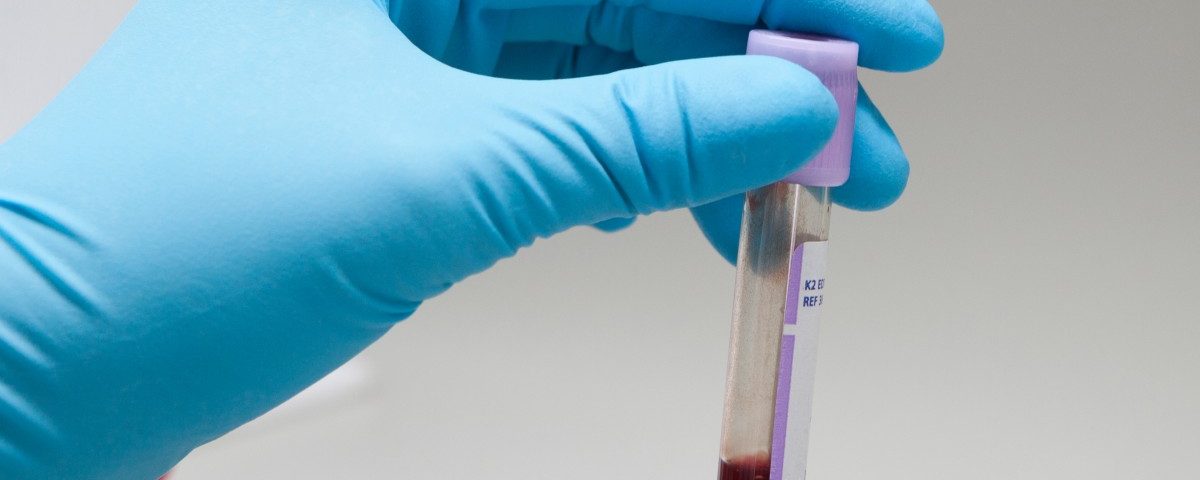Last week, I discussed my struggle with overcoming vitamin D deficiency. While my liver transplant has made it easier for my body to absorb fat-soluble vitamins, I continue to fight an ongoing battle with iron deficiency anemia.
An article in the British Society of Gastroenterology’s journal Gut reports that “one third of inflammatory bowel disease (IBD) patients suffer from recurrent anemia.” For IBD patients, the most common causes of iron deficiency anemia are blood loss and decreased iron absorption associated with chronic diarrhea and intestinal inflammation.
The most common and easiest method of testing for anemia is measuring hematocrit, hemoglobin, and ferritin levels in the blood. Both hematocrit and hemoglobin tests are performed as part of a standard complete blood count test, but I’ve always focused on just my hemoglobin levels to determine how anemic I am.
Normal hemoglobin levels vary depending on gender, age, and ethnicity. The Mayo Clinic defines a normal range as “13.5 to 17.5 grams (g) of hemoglobin per deciliter (dL) of blood for men and 12.0 to 15.5 g/dL for women.”
When I was first diagnosed with Crohn’s disease in 2006, my hemoglobin was 3 g/dL. The doctors were surprised I was even able to function being that severely anemic. Fortunately, I was already in the hospital when my blood was drawn. Because I had been hospitalized for sepsis, I didn’t receive a blood transfusion until the infection cleared and I had become more stable. I think I received at least two or three pints of blood before my hemoglobin increased to an almost normal level. It was a quick fix until my strength returned.
With the severity of my Crohn’s and anemia, my discharge orders included a follow-up appointment with a hematologist to monitor my iron levels and to check for any other blood abnormalities that may have caused the anemia. While the hematologist discovered no other disorders, my hemoglobin level was still so far below normal that she wanted me to start iron infusions.
The infusions were a new experience for me. My hematologist was part of an oncology center, and I received the infusions alongside cancer patients receiving chemotherapy. It was my first time in any type of infusion center environment. I remember feeling a sense of guilt for being “healthy,” sitting among people fighting for their lives.
In retrospect, I now have a better understanding of my disease and realize that I was also seriously ill. Little did I know how many hours of my life I would spend hooked up to an IV having medication pumped through my veins. Looking back, getting those 30-minute iron infusions was like getting a booster shot compared to the 2.5-hour Remicade (infliximab) infusions I get now.
After a few weeks, if not months, of infusions, my hemoglobin was back to a low normal level, and my hematologist discontinued them. I’ve been taking over-the-counter iron, or ferrous sulfate, ever since. I take a daily dose of two 65 mg tablets along with a vitamin C supplement and orange juice because the ascorbic acid converts the iron into a form that’s more readily absorbed by the body.
I also try to eat iron-rich foods such as spinach, dark chocolate, and beef. However, a lot of these foods are high in potassium or protein, which I have to watch because of my decreased kidney function. My balanced meals are literally a balancing act to meet all my nutritional needs while not being detrimental to my health!
And while I no longer suffer from pagophagia, the craving and eating of ice associated with anemia, my body can tell when my iron is low. In addition to generally feeling run-down, I’ll suddenly crave a thick, juicy steak or hamburger.
With my diet and the supplements, my hemoglobin still only averages around 11 g/dL, which is actually considered the low end of normal at the lab where I get my blood work done. And with the bimonthly labs I get for my team of doctors, my hemoglobin is being carefully monitored for any extreme changes. I’m also due for my annual physical in September, and I’m sure my primary care physician will want to check my ferritin and iron levels for improvement. Last year, my ferritin was only 4 nanograms (ng) per milliliter (mL) compared to a normal range of 20 to 200 ng/mL, and my iron was 19 micrograms (ug) per deciliter (dL) compared to a normal range of 60 to 170 ug/dL.
While my hemoglobin and iron levels may never reach optimal levels, I like to think that if vampires exist, I won’t be high on their list of victims. I’ll be safe because drinking my blood compared to that of a healthy person would be like settling for wine in a box when they can have Dom Pérignon.
***
Note: IBD News Today is strictly a news and information website about the disease. It does not provide medical advice, diagnosis, or treatment. This content is not intended to be a substitute for professional medical advice, diagnosis, or treatment. Always seek the advice of your physician or other qualified health providers with any questions you may have regarding a medical condition. Never disregard professional medical advice or delay in seeking it because of something you have read on this website. The opinions expressed in this column are not those of IBD News Today, or its parent company, BioNews Services, and are intended to spark discussion about issues pertaining to IBD.

